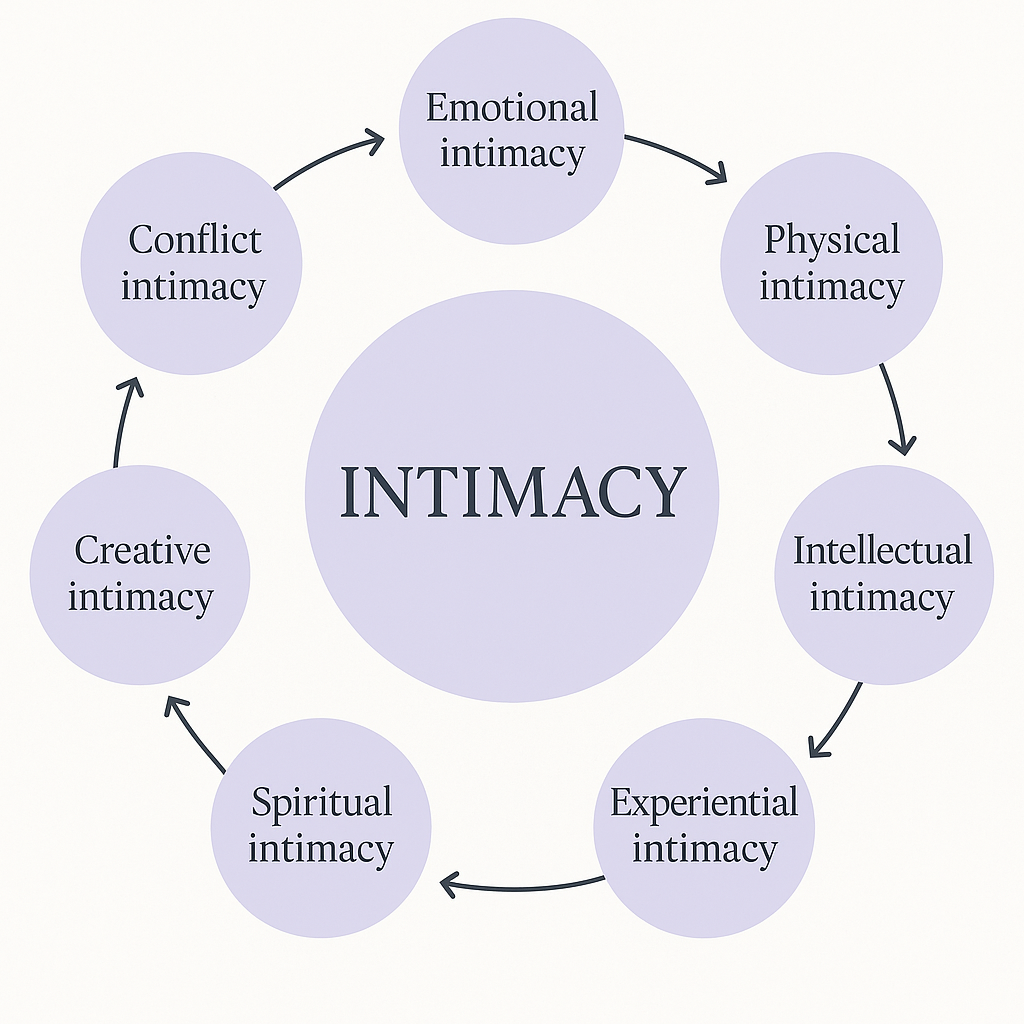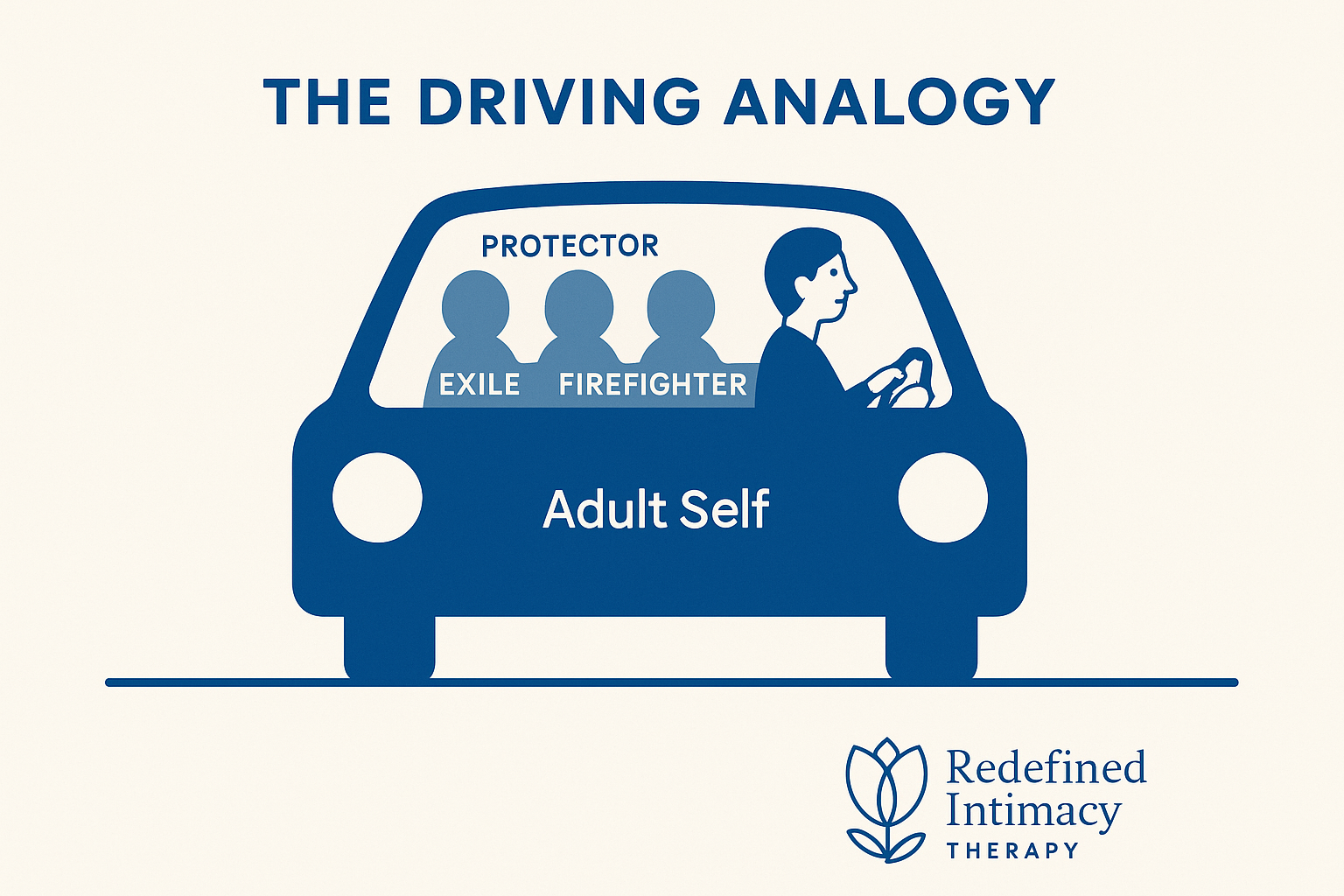1518 Legacy Dr, 1st Floor, Ste 112, Frisco TX
(469) 701-2333
Client Portal

Define and understand intimacy; for your intrapersonal and interpersonal systems.
Intimacy isn’t just about sex, cuddling, or deep midnight talks (though those count too). It’s about connection — the kind that allows two (or more) whole humans to show up without losing themselves in the process. Too often, people treat intimacy like a tug-of-war: “If I give up this part of me, maybe we’ll meet in the middle.” But the middle shouldn’t require either of you to shrink into half a human. The real question is:
How do we meet in the middle as two whole people who choose to connect?

There are many ways humans do that — many types of intimacy. Think of these as different doorways into connection:
In all of these, the theme is the same: connection without erasure.
You don’t have to give up your truth to make space for someone else’s. The work is learning how to stay ‘you’ even while reaching toward us.
Here’s where it gets real. Every relationship is a system — but so are you.
Inside each of us lives a whole cast of characters: the part that wants closeness, the part that fears rejection, the part that plans, the part that avoids.
Sometimes, one of those parts grabs the steering wheel during a conflict, and suddenly you’re reacting in a way that surprises even you.
That’s normal. It’s human.
What matters is noticing which part is showing up and deciding how to respond.

I often teach my clients a DBT-inspired practice:
Observe → Describe → Participate
If you catch yourself reacting in a way that doesn’t feel aligned, pause.
When you feel yourself spinning in disconnection or conflict, mindfulness helps you come back to now.
Use your senses — they’re built-in tools of awareness:
When you anchor in the moment, you move from reaction to response.
You can show up with full accountability, autonomy, and awareness that your humanness touches another’s humanness — and that’s where real intimacy begins.
Because often, the person you’re in conflict with is also the person you love.
And that’s worth staying curious, kind, and connected for.
Much Respect,
Melinda C. Porter
Journal Prompts: Checking Who’s at the Wheel
1. Spot the Shift
When was the last time you noticed a part of you trying to “grab the wheel”? What was happening around you?
2. The Helpful Hijacker
What might that part have been trying to protect you from? What story or memory might it have been referencing?
3. The Calm Driver
When you imagine your Adult Self back in the driver’s seat, what does their voice sound like? What does it say to the younger parts in the backseat?
4. Passenger Check-In
Which of your “passengers” (Protector, Exile, Firefighter) tends to pop up most often when you’re stressed or hurt? What would it need to feel safe staying in the backseat?
5. The Road Ahead
How do you know when you’re driving from Self—what sensations, tone, or inner cues tell you that you’re present and grounded?
6. A Loving Reframe
If you could thank your parts for something today, what would you say? What do they need to hear from you to trust your leadership?


